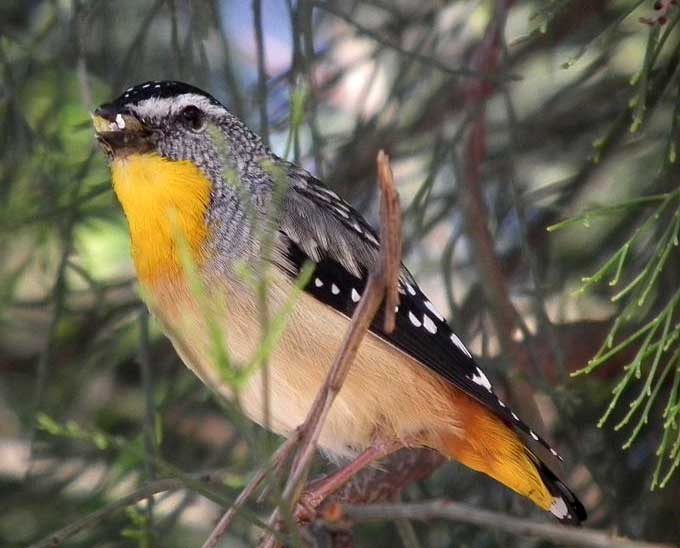Pardalotus punctatus (*) Cladus: Eukaryota Name Pardalotus punctatus (Shaw, 1792) Vernacular names Reference The naturalists' miscellany 4 pl.111,text The Spotted Pardalote (Pardalotus punctatus) is one of the smallest of all Australian birds at 8 to 10 cm in length, and one of the most colourful; it is sometimes known as the Diamondbird. Although moderately common in all of the reasonably fertile parts of Australia (the east coast, the south-east, and the south-west corner) it is seldom seen closely enough to enable identification. All Pardalotes have spots and all nest in tunnels at least sometimes; the Spotted Pardalote has the most conspicuous spots and (like the Red-browed Pardalote) always nests in tunnels. Pairs make soft, whistling wheet-wheet calls to one another throughout the day, which carry for quite a distance. One of the difficulties in locating a Pardalote is that the contact call is in fact two calls: an initial call and an almost instant response, and thus can come from two different directions. Spotted Pardalote numbers appear to be declining, especially in urban areas[1], but the species in not considered endangered at this time. Source: Wikipedia, Wikispecies: All text is available under the terms of the GNU Free Documentation License |
|

